THE MOST SPECTACULAR RESTAURANT IN THE WORLD THE TWIN TOWERS, WINDOWS ON THE WORLD, AND THE REBIRTH OF NEW YORK
The remarkable story of a restaurant on top of the world—built by a legend, destroyed in tragedy—and an era in New York City it helped to frame
In the 1970s, New York City was plagued by crime, filth, and an ineffective government. The city was falling apart, and even the newly constructed World Trade Center threatened to be a fiasco. But in April 1976, a quarter-mile up on the 107th floor of the North Tower, a new restaurant called Windows on the World opened its doors—a glittering sign that New York wasn’t done just yet.
In The Most Spectacular Restaurant in the World, journalist Tom Roston tells the complete history of this incredible restaurant, from its stunning $14-million opening to 9/11 and its tragic end. There are stories of the people behind it, such as Joe Baum, the celebrated restaurateur, who was said to be the only man who could outspend an unlimited budget; the well-tipped waiters; and the cavalcade of famous guests, as well as everyday people celebrating the key moments in their lives. Roston also charts the changes in American food, from baroque and theatrical to locally sourced and organic. Built on nearly 150 original interviews, The Most Spectacular Restaurant in the World is the story of New York City’s restaurant culture and the quintessential American drive to succeed.
A journalist for over 20 years, Tom Roston worked at The Nation and Vanity Fair, and was a senior editor at Premiere for a decade. His work has appeared in The New York Times, Fast Company, New York Magazine, Food Republic, Salon, and more. He lives in Brooklyn, New York
Windows on the world was a destination restaurant. One that had once been described, as the title of the book says, as The Most Spectacular Restaurant in the World. The tragic end of the restaurant is known all too well and has become a part of the American psyche. But what of the beginnings? Who were the people who were able to create and run such a place. And just how did the restaurant contribute to the revival of New York as a world class city?
We spoke with author Tom Roston about his new book that looks into the history of Windows on the World and the ingering place it has in the history of New York and void it left in the hearts of New Yorkers.
![]()
BAF: So how did this book come about?
Tom Roston: So I’m a New Yorker and growing up in New York in the 1970s, everyone was aware of these strange file cabinets at the end of, the end of the borough that were going up. I was a little young when they were going up but once they were up everyone knows about it because you either went or you thought about going. Everyone has family or friends that came to the city, it was always a consideration. And eventually I did go, I went as a kid once, I went in the nineties as a young adult for dinner. And then I went again when it had its reboot around ’98, ’99. It became this great night club scene and for the price of a screwdriver you can go to the top of the World Trade Center and dance, it was amazing. So just as a New Yorker, that was my connection, I went there a few times and I was always aware of it. And every time I would look at the World Trade Center, I think that was part of my thinking about it, was that I knew that restaurant was up there.
BAF: You know how it is that New Yorkers never go the Statue of Liberty or never go up the Empire State Building.
Tom Roston: Right.
BAF:But somehow Windows,was a place where New Yorkers would go. It was a destination for the locals to go because it was such a unique spot.
Tom Roston: Yeah, it was. And like I said, often it was because we were bringing people from out of town there, that’s true. But I think it was much more attractive than say Statue of Liberty partly because the access was… You could just take an elevator up to the top and just get a drink. But also we all got to eat and then you figure out where should I go eat? And you’re always thinking about places to eat in New York and it was just another good place to go.
BAF: Certainly it was a place where you could go there and you would have a good meal.
Tom Roston: Right. I mean, I think what I’ve found really interesting was that the history of the restaurant was long, 25 years, and it had ups and downs, we know this. Restaurants can be great for a year or two and they can go straight downhill, whether it’s because the chef changes or just because the restaurant just gets lazy about what they’re doing, whether or not their deliveries are different. There’s so much that can go into a restaurant, but especially a restaurant that has so many factors going into it and it’s such an institution. So Windows on the World, I think the food was probably pretty great in the seventies. I mean, it got the reviews and just from what I know of the produce that was going in there and how different it was from other restaurants.
And then by the late eighties and up to 93, it started to go downhill, no question. They had a new investor that was behind the restaurant, who didn’t really care about it? And it just became, part of its reputation was that it was a tourist trap, and it very much I think it was just a tourist trap in the late eighties or early nineties. But then it had a rebirth and have newer chefs that were coming in. Michael Lomonaco was a key part of revitalizing the restaurant with the sort of basic American fare during the rebirth from around ’97 to 2001.
BAF: How did you get involved with this? Or what was your moment where you said this story needs to be told.
Tom Roston:Just as a native New Yorker I’d always known about the restaurant, it’s an institution, it was an icon, I had been there a few times. And as a journalist, you’re always looking for stories, right? You’re always trying to figure out one story or another, I love to write about my hometown and I’m always looking for different kinds of stories and I love different subcultures. And I just made the connection, well, here’s this icon and it was destroyed on 9/11 and yet this icon has never been properly memorialized. So actually I wrote a magazine article about it 10 years ago for Manhattan magazine. And it was very short, about 1500 words, and that was successful but then it just… it happened, it was over. Many years later a friend of mine who worked for Bobby Flay, his production company, talked to me about, “Let’s turn your article and the story of Windows on the World into a documentary.” And we got a little ways on that but it didn’t come together. And actually, that’s probably a good thing, it wouldn’t have been very good. But there is a great documentary that has yet to be made about Windows on the World. But after that fell apart, I thought it could’ve made a good documentary, it’ll make it even better book. And so I went and it really got me started in that and luckily I got publisher that was interested in doing it.
BAF: It’s history but not ancient history so how did you… I assumed there would have been a lot of people that would have been happy to, not necessarily happy, but willing to talk to you about it. How did you go about putting everything together?
Tom Roston:That’s the thing that we’re all looking for as writers, right? We’re looking for something that we can get, there’s a story that hasn’t been told but we can get access to the resources to tell that story. And yeah, like you said, this is not that distant history so the people are still alive. And in fact, yes, the people who worked there were extremely happy to tell this story because they felt their story hadn’t been told. And because 9/11 had happened and so many years had passed, they saw it receding in the background. Many of them have children who don’t really understand what Windows on the World was, that don’t understand the place that they worked. So I had many different people from the top money people, to Bangladeshi dishwashers tell their stories. And so it worked out quite well. I talked to over, the number I used was over 135 people for it, and so I covered on a lot of people. A lot of people work there, a lot of people went through there, so there are many more I could have covered but I hope that I got a good enough representative swath.
BAF: Joe Baum started it or was the key person behind it, I think a lot of people these days might not know who he is or who he was. Was he the only person back then in New York’s restaurant scene who could have pulled this off?
Tom Roston: There were a couple of other people you could say may have done it, but yeah, Joe Baum was the first true restaurateur in probably the world but maybe we can say in New York city. And when I talk about a restaurateur, it means not just a person who runs a restaurant. Once there was a time a lot of great people owned their individual restaurants and they did a great job. But Joe was a marketing guru as well as a visionary as well as a food guy and he would go from one restaurant to another and he would start them up. And he would put his imprint, his signature on it.
He created some of the greatest restaurants in New York in the mid 20th century. The Four Seasons being the greatest of them all, The Four Seasons is considered by many the greatest restaurants that was ever created. It was incredibly innovative in terms of its fresh foods and its presentation and it’s just abilities for fine dining and wine, everything. So he was the one who started that restaurant, The Four Seasons, but he also started so many others like Zum Zum and La Fonda Del Sol, which were German or I guess quasi-Latin American. But it was this pan Latin American way before, with all pans, the pan Latin American stuff, pan Asian stuff that we do now. So he was the great restaurateur, he had actually gone through a decline by the late sixties so the Port Authority picked him to do this restaurant probably because they had a relationship with him but, yes, because I think he was by far the best man for the job.
BAF: There were a lot of problems they had to overcome to get there.… As you mentioned getting the gas lines up, getting the deliveries, getting everything up and running, it must have been quite a task.
Tom Roston: Yeah. Being able to create a fine dining experience 107 stories up in the sky in the mid 1970s was no easy task, it was incredibly difficult. And for example, the client wanted to have the restaurant have gas…
So the restaurant was originally supposed to have gas stoves and gas ovens, of course, because all great restaurants have that. The only restaurants that don’t are on cruise ships. But unfortunately there was an explosion where a building at a terrible gas leak just about a couple of years before the restaurant was opened. And they decided, the Port Authority told Joe Baum, “You can’t have gas on 107 stories up.” They got nervous. Because also the buildings were built to list back and forth, they went eight or 10 feet to the side. And so you imagine these gas lines going all the way up. So they got nervous and so they said no more gas. And so Joe tried to adapt, he said, “We’ll put propane tanks on the top of the building.” And they said, “No, that’s dangerous too. And so eventually they had a compromise where they had a wood-burning stove up there but they also had electric ranges.
It’s a pain, it’s terrible. You can’t tell when it’s going to get hot enough, it’s very hard to control. But for a professional chef it’s even harder because they are quickly moving through so many dishes and everything. And so they would have these electric ranges amped up and they would actually pop and explode. And so they had a lot of obstacles. My favorite one is the story of truite au bleu or blue trout.
One of Joe Bomb’s favorite dishes was truite au bleu which was blue trout, which the key to that fish is that you have to have the fish alive in the kitchen because when you kill it and you boil it, it has to have the slime still on it because this combination of the slime with the court-bouillon creates a chemical reaction where the fish turns blue. And so to us now I think it would be gross, because it’s bright blue, but back then it was entertainment and exciting. And it was a simply served dish, it was fresh fish, potatoes, parsley, butter, salt, lemon, and a blue fish, so it was exciting and a conversation starter.
And so Joe Baum wanted to serve this. But the problem was that the fish was always ending up dead in the kitchen. And Joe was like, “We can’t do blue trout if the fish has done the kitchen, I need live fish.” So they blamed the guy who was bringing it down from the upstate New York and that guy said, “No, I’m bringing it fresh, I’m bringing live.” And so then they said it was the guys downstairs, somehow they were killing it. And then they said, “No, we’re not doing that.” And eventually they talked to the Cornell agriculture school and they said, “Here’s our best bet, your fish are getting the bends on the way up.” 107 stories in the sky, it’s a quarter of a mile, and so they were getting air embolisms in their blood and so they were dying on the way up. So again, this was another obstacle of serving good food and so blue trout was never served at Windows on the World.
BAF: Eventualy they get this restaurant running and it really became a haven for the city, it was very popular. Once it was up and running how would you define its success?
Tom Roston: The easy way to define it is it was making the highest gross of any restaurant in the world right when it was destroyed in 2000, 2001. And I can’t say for sure it was the highest grossing in the seventies but it was doing quite well in the seventies. I mean, they had huge costs, of course, but the Port Authority, luckily for Joe, stomached a lot of the costs. So they were making money hand over fist. I think they were serving over a thousand covers a night, which is a tremendous amount. So they had the people coming in, they were making top dollar and it was being celebrated. It didn’t always get the great food… It was always looking for stars in the New York times and it didn’t always do great, but Ruth Reichl gave it I think it was one star or two stars… Maybe I think gave it two stars in 1997, ’98. So it did get some credit for its critical acclaim for its food as well.
BAF: Windows was one of those places where it highlighted that the potential glamor of New York and success of the late seventies, early eighties. Maybe it was one of the instigators of the whole yuppie culture and upwardly mobile thing. So how much of a role did Windows have in New York’s resurrection?
Tom Roston:I think it had a great deal because downtown was not really a site of culture or for industry. No one would consider putting an expensive restaurant downtown until these guys did. Now you can look at it different ways, the Rockefellers were behind Chase Bank and they had developed one of their headquarters downtown and so it was a real estate scam, if you will, where they wanted downtown to become more vibrant and they wanted to see more investment, because their bank was down there. So they wanted the Port Authority to create the World Trade Center to bring more commerce and culture downtown. Because back in the seventies, forgot about it, there was nothing like it.
So they had the governor, Rockefeller was the governor too. So they basicly got the World Trade Center in New York. And the way to make the World Trade Center attractive, they realized, was put a restaurant on it. I mean, there was the observatory tower, that’s great and it’s a tourist site for people to go up. But for it to have something more permanent and constant, consistent, they had to have a restaurant. So for the first time, once Windows on the World was up there, for the first time people were going downtown to do something, to see something, to celebrate something. And so downtown, it was totally changed by Windows on the World and the World Trade Center. You could say it revitalized what is now considered the most successful part of the city. So yeah, it had a great deal to do with revitalization of New York. And New York in the seventies was a pit and there were very few people who were willing to invest in the city. I mean Gerald Ford famously said… Didn’t say it, but the Daily News said, “Drop Dead.” And the Windows on the World was the polar opposite of that, it was an example of saying, “Let’s bring it to life.”
BAF: Windows on the World I think had probably what was considered to be one of the top tier wine cellars,
Tom Roston:Kevin Zraly was considered one of the pioneers of wine culture in the 1970s. He was this young guy, 25 years old when he got the job working for Windows on the World in 1976. It was during that, I mean, as I’m sure you know, during that whole shift when people started saying wine doesn’t just have to come from France can it actually come from California. Windows on the World was at the front of that chart because Windows was taking in all of these different California wines because Kevin Zraly really believed in them. But also they did an unusual thing, they didn’t get the same markup that other restaurants would do with their wines. They figured if we can sell two wines it’s better than selling one wine to a higher price and everyone’s happy. And so it was part of making wine more accessible. So any wine connoisseur knew Windows on the World and considered going there because they had thousands and thousands of bottles, they had the top tier seller. But also they had Kevin Zraly, an incredibly amiable and approachable and entertaining cellar master, they didn’t call him a sommelier.
But then also Kevin started developing in 1980, a wine class that anyone and everyone in New York pretty much took, whether they were new to the field or if they were experts because it was just a great cultural moment to go to Windows on the World and do this wine class. And now, I mean, it’s past their time but for a while any sommelier you met in country, you could get a sense of whether or not they had actually trained at Windows on the World because so many had. And the Kevin Zraly Windows on the World wine book is, they’ve sold millions and millions of copies.
BAF: Were there any surprises in the writing of this book that you came across or anything that hit you?
Tom Roston: Well, I guess it’s the opposite of surprise. I was really eager to tell the immigrant story that I knew that was coursing through the restaurant. And I initially was focusing on the immigrant story from the seventies and the eighties, I wanted to get that, but it only really came together when I started to meet the families of the people who died on 9/11 and the there were several families that I met that I was able to tell their story of these undocumented workers at Windows on the World who’ve died on 9/11, it was sort of this thing that I knew that was out there and then once I found it it was such a relief. But to be able to see that the 9/11 fund that was passed by Congress to support the victims of 9/11, a key component of it was that it didn’t say whether or not you had to be documented or undocumented.
It just basically said, “If you died here because of this tragedy, because of this awful attack, you’re entitled to relief from our government.” And to me, that’s such a contrast to the world we live in now. We’re such a divisive world now that we have this clown and in the white house, for the moment at least, who will divide the United States from everywhere else. But Windows on the World was this the restaurant that brought all these different people together, whether they were working there or they came out from out of town but also in the 9/11 fund which showed that this country treated anyone and everyone who was different would be treated the same. And to me, that was a relief and a surprise and gratifying to be able to tell that story.
BAF:That is a nice story, we need more of it. I believe, Chef Michael Lomonaco was also very instrumental in pushing for the restaurant workers.
Tom Roston: Yeah, Michael was and David Emil. I mean, there was controversy about David Emil, who owned the restaurant at the end. But yeah, Michael Lomonaco was great, he definitely supported all the workers, undocumented immigrant workers for a while. And they created this amazing Windows on the World relief fund which paid for everyone’s… It was very well endowed and it took care of the families of the… I guess it was 79 families that either worked for or at Windows on the World that died, and it took good care of them.
I mean, Michael Lomonaco and all these guys who went to work that day, when they looked up, and you could see the pictures now, you see pictures of people holding these great white cloth fabric and they think that those were the tablecloths from the restaurant. I mean, the restaurant is sewn into the tragedy of 9/11 in so many ways.
BAF: How many employees were killed that day?
Tom Roston: Well, 73 employees and then there were six guys on a construction job at Windows, so it was 79 people working for Windows. And then I think it was 92 guests, there were mostly at a catering event.
BAF: I didn’t realize guests were there actually.
Tom Roston: Yeah. Yeah, there was a corporate event on the 106th floor. So everyone above the impact site in the North tower died.
BAF: Well, to actually on maybe a happier note or segue there, is there a way to go to define the eras that Windows went through?
Tom Roston: You could but we might have to work our way through it. The beginning is the city is in the dumps but the restaurant reaches for the stars, kind of thing. So the city was on it’s last leg, financial ruin in mid seventies, and yet here was this incongruous restaurant clad in brass and way up high and mirrors and opulence. So it was very risky, but it was just… That’s the beginning of the restaurant, so that’s from like ’76 to… Oh, I don’t know, maybe you can say that that lasted until ’87. And then at the end of the eighties there’s black Monday, there’s financial insecurity on Wall Street. There’s also a change of ownership or Windows on the World. And so there’s a decline, so let’s say from ’87 to ’93 the restaurant was starting to lose its luster.
And then ’93 was the World Trade Center bombing and so they had to shut the restaurant and so then there is pause, so we have an intermission. So we have two acts, intermission. And then right after that there’s the rebirth, and the rebirth was a disaster, it was a total mess. Joe Baum was re-re-re-employed to re-reinvent the restaurant, but he was on his last leg, he was not doing well. There was conflict between the kitchen and the owners and it was just a mess. But then, so that’s the little bad beginning on the second part, ’96, ’97. But around ’97 to 2001 is the Renaissance, is when the restaurant started to get its legs, Michael Lomonaco was a key part of that. It became the highest grossing restaurant in the world. And then of course, you’ve got 9/11. So that’s the next part.
BAF: Going back, when you were a kid and you visited the restaurant or even older, what were your thoughts?
Tom Roston: It sounds cliche but, “Wow.” I mean, you must think so much about restaurants and how people enjoy food. We know that the food itself is extremely important but it’s the environment that you’re in that’s also equally important. And so one lobster roll, this is actually a true example, you eat a lobster roll… This is for me. You eat a lobster roll in Red Hook, Brooklyn and it’s tastes like one thing. You eat the same lobster roll in Gloucester, Massachusetts and it tastes amazing because you’ve got the smell of the ocean. The same thing with the food and the environment at Windows on the World. It redefined fine dining that could be also have a wow factor to it. I mean, there’s a negative to Joe Baum, he’s known as being the starter of theme restaurants. But there are themes that actually have a signature and have meaning that done in at their best, they can be quite delightful. Of course they can be corporatized and turned to crap. But he knew how to create culture and a positive vibe that made people feel good when they ate the food and hopefully… And then he also believed in the food too.
So to me, it had all these elements. As a younger person, before I was thinking about food professionally or as a writer, it was just it was exciting. I mean, I didn’t really think that much about the food but I thought about looking at these incredible views and then eating food was exciting at the same time to do that. I mean, I have to say, it’s a good contrast. The current One World Trade Center has a restaurant up there, it’s really purely just for tourists. It’s a snack bar, basically. And I ate the food there and it was so disparate and uninspired. So it’s not just about having a view Windows on the World was able to do that.
BAF: Right. It wasn’t a tourist-
Tom Roston: It wasn’t just a tourist trap, it wasn’t just a great restaurant. It was a balance of many factors, it was its own thing, really. It really was, it was unique.
BAF: The paradox of writing this book is that everybody knows how it ends, so it’s almost that you’re starting on a downbeat, so to speak.
Tom Roston: All right. Yeah, as a storyteller, frankly I welcomed that challenge of having a story that everyone knows the ending to. I found that very creatively interesting and challenging and welcome because as storytellers it’s always so hard to figure out how to begin, middle, and end a story. And by knowing the ending, I think it in a way it set up the structure for me and I knew what I had to engage with. I worked it out because I was able to end it on the story of Anna Soria, A-N-N-A new word S-O-R-I-A, the wife of one of the undocumented workers who died on 9/11, by having her go to the Memorial. I write a story, the book ends on her going to the Memorial many years later after 9/11. And I think it’s an incredibly uplifting story. And it’s, for me, one of the most powerful things I’ve ever been able to convey. I’m not giving myself any credit for it, I was just lucky enough for her to tell me about it, she’s the one who gets all the credit for it. But she had an amazing moment there at the 9/11 Memorial with other people and to see how, once again, Windows on the World was bringing people together even 16 years after it had been destroyed.
BAF: What are you working on next?
Tom Roston: Yeah, sure. I’m working on a book on Kurt Vonnegut and PTSD actually and the connection, because Slaughterhouse-Five, his masterpiece, was able to anticipate PTSD. And I think it’s very interesting to look at how and why that happened. And I think my experience working with people confronted with 9/11 led to this in a way. Also Kurt Vonnegut, such a great storyteller, and he adopted New York as his hometown after coming from Indianapolis. And so I see threads from Windows to Kurt, or at least maybe I’m the thread. I’m proud to have an association with either one of them. So I’m psyched, I feel very, very lucky to have been able to write about both of them.
![]()
©Booksasboutfood.com 2020
STARRED REVIEW “A detailed, inspiring, and horrifying account of the restaurant that sat atop the North Tower of the World Trade Center. Former Premiere senior editor Roston returns with a rich, complex account of Windows on the World.” — Kirkus Reviews
“The city’s premier celebration venue, deeply woven into its social, culinary and business fabrics, deserved a proper history. Roston delivers it with power, detail, humor and heartbreak to spare.”— New York Post
“The book offers a completely new perspective on the history of the acclaimed establishment, which opened its doors in 1976.”— Fortune Magazine
“Much more than a history of a restaurant spectacular for its views, Roston has woven together a riveting history of New York City since its near collapse in the 1970s and intriguing stories about the restaurant business. The terrible tragedy of 9/11 looms, but there is also a heartening theme of how even the worst architectural excrescence can be transformed by people and imagination. The World Trade Center was cold and ugly from its inception, but its restaurant was magical.”— Paul Freedman, author of Ten Restaurants That Changed America
“Within ten pages, I pushed aside everything else I was doing and read the book for hours, because Roston has written something far more illuminating and edifying than a chronicle of this ridiculously audacious achievement, feeding people a quarter of a mile in the sky. … Roston has crafted the most detailed, all-consuming and thoroughly spellbinding portrait of my hometown during this daunting, delirious decade that I’ve ever read. … If you love this city (and if you don’t, better not tell me), grab this book.” — Hal Rubinstein, Forbes
“This book, as bold and opinionated as a true New Yorker, offers a well-documented account of what it takes to create and manage the highest kitchen in the world. Its author is not afraid to call a coq-au-vin a coq-au-vin and does not suffer from vertigo. Bravo, the result has great balance, despite the strong winds of adversity found at such altitude!” — Philippe Petit, High Wire Artist
STARRED REVIEW “Billed as a history of Windows on the World, the 107th-floor restaurant in the World Trade Center that ruled the New York City skyline from April 1976 until September 11, 2011, this engrossing tale delivers much more.” — Booklist
“New Yorkers have seen many fine restaurants come and go, but losing Windows on the World to the terrorism that came to NYC on Sept 11, 2001 left a void in the city’s dining experiences that will go unfilled. The restaurant was as iconic in its own right as the Twin Towers. Thankfully, Tom Roston documents this unforgettable restaurant in a book worthy of that once magical New York destination.” — David N. Dinkins, 106th Mayor, City of New York
“With exhaustive research and crystalline writing, Tom Roston unspools the glamorous story of a culinary temple in the sky, of cooks and busboys proud to work amidst clouds, and of an era that today seems romantic and innocent. The book frequently makes the heart swell, but never more than in its account of an undocumented immigrant who rose from stock boy to manager, and whose story (the breathtaking end I’ll leave your heart to discover) is America’s story. Roston’s book is a riveting account, not only of a one-of-a-kind dining room, but of the evolution of New York City’s restaurant business itself, a concentration of talent, industry and imagination forever the envy of the globe.” — Ted Allen, host of “Chopped,” Food Network


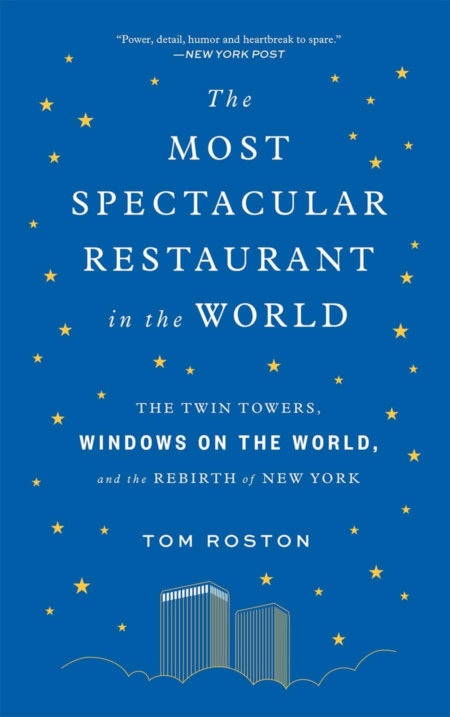


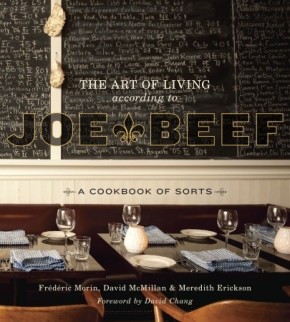

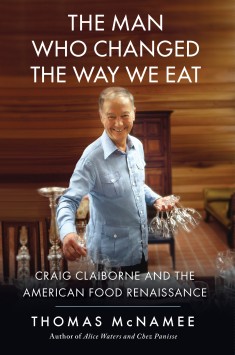
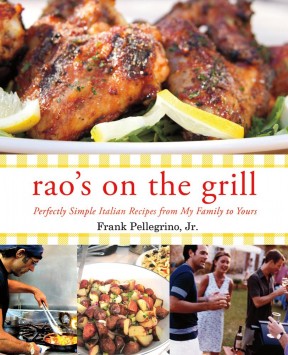
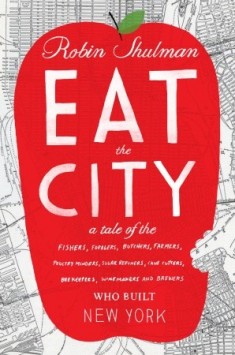
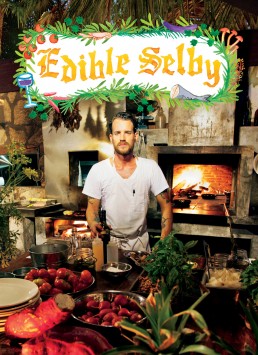
Leave a Reply